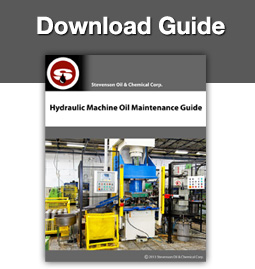With our bodies, it is also imperative that you determine your overall health today, where your health needs to be and how to get there (so you can remain and continually feel your best).
With hydraulic systems, reviewing the oil recommendations from the manufacturer is critical if you want to get the most out of hydraulic machine oil. By assessing the current condition of your machine oil, you can make the necessary adjustments and changes to the fluid and system to get the right results. Documenting and monitoring the machine oil and system allows you to improve costs and profitability while reducing downtime and other headaches that can be avoided.
Training, personnel and paperwork are all reasons why maintenance departments often do not have documented programs. All three of these relate to time. It takes a significant amount of time to determine who needs to be part of the process and who is ultimately responsible for the monitoring. It takes time to train personnel to sample correctly and consistently. Based on what they discover, you can take corrective measures to bring the oil back to the desired cleanliness level.
For example, it is important to get the sample while the machine is in operation or right after it’s been shut down. The oil will have any contaminants running through it and will be a representative sample of the true machine oil. If the sample is taken after an overnight shutdown, it won’t be the product that is running through the system. All of this sampling is in addition to their regular job duties and it can be difficult to incorporate new procedures into current responsibilities.
Finally, paperwork is always an issue.
A successful program must be documented on a regular and organized basis. But it takes time to produce documents that work for your facility and are also user-friendly. All of these issues may take more time initially. Ultimately, however, there will be a reduction in downtime and repairs.
Oil monitoring is especially important for those maintenance departments working with sensitive components, such as servo valves. In those cases, two 3-micron filters should be used to achieve the targeted cleanliness level. The filters should be changed at regular intervals (herein lies the importance of documentation).
Very high pressure pumps with proportional valves, hydrostatic drives or test stands operating under severe conditions may also require two 3-micron filters. Whereas, pumps with fixed gears, vanes or pistons, operating under moderate conditions, require a filter with a higher micron rating.
Oftentimes, the filters can be strategically located to optimize cleanliness. In the case of servo valves, a filter can be located on the return line, pressure line or offline. Even adding one filter to the offline will make a significant difference in the cleanliness of the machine oil.




